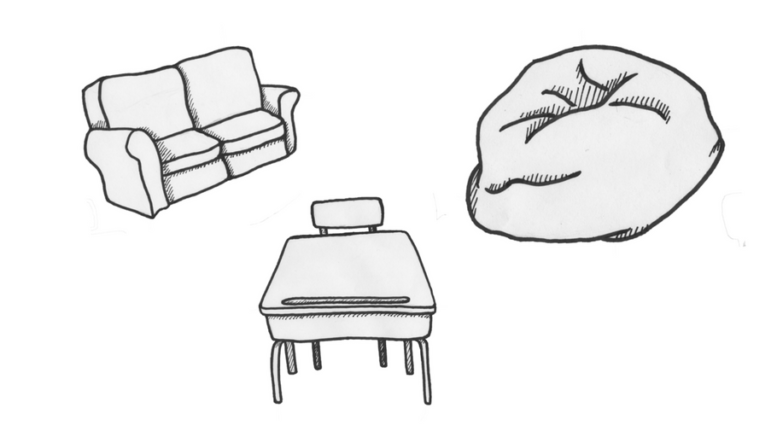Classroom desks or chairs are organized in different ways depending on a teacher’s style of teaching. The desks may be organized in rows, a large circle, semi-circle, tables, or other layouts. The teacher may also have assigned or free seating.
The reason a teacher decides to organize their classroom could be for a variety of reasons. For example, if the class is group task oriented, the teacher may have their students in assigned clusters, based on who works best together. Similar situations may happen for ability level and behavior management.
A teachermagazine.com study in 1999 tested whether different seating arrangements led to students asking more questions. They tested traditional rows and a semicircle.
According to the researchers, “the results showed that question-asking was more frequent when the children were seated in the semicircular arrangement than in the row-and-column arrangement.”
Researchers learned that those sitting in a more central seat asked more questions per lesson displaying how seating can seriously impact the classroom setting.
In certain types of classes, some seating arrangements are more preferred than others. This could depend on the material being taught in each class, along with the teachers individual preference.
“In the beginning of the year, I always try to sit in the front row if possible. I have Attention Deficit Disorder (ADD) so it helps me focus a lot better. For discussion classes like history and English I prefer to sit in a large circle,” Danielle Gleaton (’19) said.
Although having the desks in rows may work best for some students in certain classes, it is not always the best layout in others.
“In art classes, it is definitely best to have large tables to spread materials apart and around. I cannot imagine an art class with desks instead of tables,” Ramie Hale (’19) said.
Mrs. Gallo, an English teacher decided to put a unique twist to her seating arrangements. In her classroom there are bean bags, couches and other non-traditional seating available for her students.
“I like Mrs. Gallo’s classroom seating a lot because for this class specifically, the style of learning is more group work and talking with each other. It is not as effective to be in desks and rows. I look forward to this class because of the seating,” Tejas Vermani (’21) said.
Students that do not have this type of seating available to them may feel like they are missing out. Many excel in this type of unconventional learning environment but unfortunately it may not be available to them in school.
“I work best on a couch and a laptop. If we had laptops and iPads [in the classroom] it would be more of a ‘homey’ environment. I do not like sitting in a desk all day, I work best when I am comfortable,” Mikela Pirri (’21) said.
Students thrive in different atmospheres, whether they are more of a home-like environment or the traditional classroom setting.
“If I am going to do work in school, it needs to be in a school like environment. I could get very distracted with couches and other things that are not usually in a classroom around me,” Hannah Scherrer (’21) said.
With each seating arrangement comes issues, such as students with their backs to the board or a taller student blocking the view of the board.
More specifically, according to teachermagazine.com, “the lighting may be much better in one part of the room than elsewhere, it may be cold over by the windows, and perhaps too warm by the heating vent. The view of the blackboard differs dramatically from one part of the room to another, often because of a glare from the ceiling lights.”
Overall, the utilization of more creative seating arrangements has the potential to truly benefit the students at Westhill.

